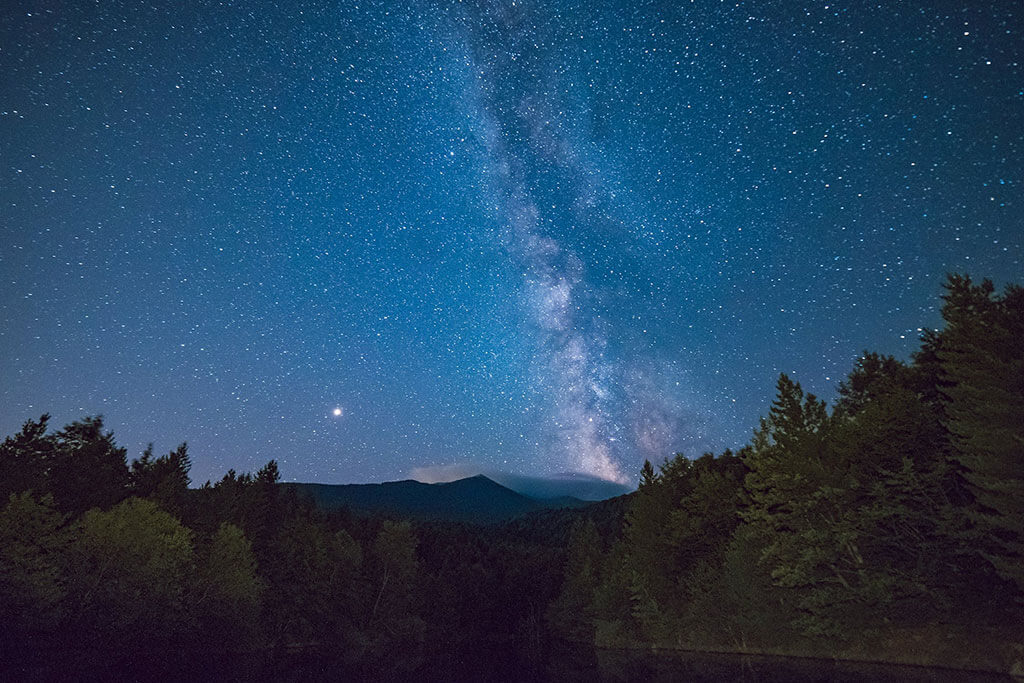
28
September
RASC Mississauga: Under Southern Skies
In this talk and slide show, Michael Watson will discuss his recent month-long trip to Australia, which included several nights of stargazing and astrophotography from the dark skies of the Australian Outback. He will talk about how he prepared for the trip, the equipment that he took, and how he produced the photos that you will see. His astrophotos will be interspersed with photos of some of the sights from around the Land Down Under.

26
September
Speaker's Night: The Dark Universe
Watch the recorded video: https://youtu.be/A1DNSteIVho

26
September
ASX Star Talk: Astronomical Alchemy
Calling all space enthusiasts! Come on down to ASX's first Star Talk of the school year on Wednesday, September 26th where U of T astrophysicist Dr. Maria R. Drout will be illuminating the origins of all the elements in the universe!

26
September
UofT Planetarium: The Life and Death of Stars (SOLD OUT)
Showtimes: 7:00pm, 8:10pm
The stars in the night sky seem unchanging and eternal, and have remained the same for the history of human civilization. However, over millions and billions of years, new stars are born, live out their long lives, and eventually die in a blaze of glory. In this show, we will be exploring the lives of stars by visiting stellar nurseries, supernova remnants and much more!

23
September
Soapbox Science 2018 Toronto
Last year we introduced Soapbox Science to North America and we couldn’t be more excited for this year’s Toronto event! Our organizing team is preparing for another fabulous day in September at Toronto’s Word on the Street Festival. What better way to promote science in the streets than at a literacy street festival? Last year we engaged hundreds of families along Toronto’s Harbourfront; they were surprised and delighted to have the chance to meet our scientists in person and learn about their research.

22
September
UofT Planetarium: Grand Tour of the Cosmos (SOLD OUT)
Showtimes: 7:00pm, 8:10pm, 9:15pm

22
September
DDO Speaker Night (WAITLIST)
This weekend program provides visitors with an opportunity to listen to an astronomy talk and enjoy stargazing. Visitors will spend time in both the main building and observatory visiting the 1.88m (74") telescope, learning its history and getting to see celestial objects firsthand (weather permitting).

22
September
Danforth/Coxwell Library: Moon Mission
It's Science Literacy Week! Learn about the Moon by examining its living conditions and possible landing sites. Together you will decide which landing sites would be ideal for the next Moon Mission. Act as scientists and engineers at NASA or the Canadian Space Agency!

22
September
Soapbox Science 2019 Toronto
In 2017 we introduced Soapbox Science to North America and we couldn’t be more excited for this year’s Toronto event! Our organizing team is preparing for another fabulous day in September at Toronto’s Word on the Street Festival. What better way to promote science in the streets than at a literacy street festival?

22
September
Solar Observing (GO)
Join us at the Ontario Science Centre for our monthly Solar Observing on the TELUSCAPE observing pad. This is the area in front of the Science Centre's entrance. We use specialized telescopes that are safe to aim at the Sun. Check our home page on the Friday prior for go/no-go calls as this event is weather dependent.

21
September
CSA: Fireside chat with Canadian astronauts (WEBCAST)
On September 21, Amber Mac will lead a discussion on space exploration with nine Canadian astronauts at the University of Ottawa. Don’t miss this unique event!
The event will be streamed LIVE on the CSA Facebook page at 11:30am.

20
September
Elmbrook Park Library: Makers' Club - Moon Science
In celebration of Science Literacy Week we would like you to come and learn about the moon, make moon craters, and explore moon phases.
